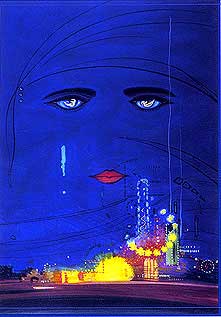
Francis Scott Key Fitzgerald was born in St. Paul, Minnesota, in 1896. He was educated at St. Paul Academy, the Newman School, and Princeton University. He left Princeton in 1917 without a degree. He decided to join the army. Shortly after he joined the army, he was demobilized. He then sold his first short story. His first short story sales were made on his own, without an agent.
The first novel that Fitzgerald wrote was This Side of Paradise, published in 1920. He was just twenty-three when he published this novel. This Side of Paradise was about his early life at Princeton. He was then known as the spokesman for the "Jazz Age."
The same year he published his first novel, Scott was married to Zelda Sayre. The couple began traveling all over the world. They began in New York, and continued from there. From New York, they traveled to Paris, the Riviera, and Rome. They became entwined in a group of American expatriates. Scott and Zelda only had one child, a daughter, named Scottie.
The highlight of Fitzgerald's career was the novel The Great Gatsby (1925). Although his popularity slowed down after this novel, he continued writing. In 1930, Zelda suffered a nervous breakdown. This breakdown required Scott's wife to be put in an institution. At this time, Scott was slowly becoming an alcoholic. Zelda's breakdown and Scott's alcoholism were partly due to the wealth and popularity Scott was receiving at the time.


![]()

(Left: The cover of The Great Gatsby, taken from the novel The Great Gatsby)
(Right: A picture of F. Scott Fitzgerald)

At his peak, in 1925, Scott Fitzgerald was earning more than $36,000 a year. He wrote commercial short stories for The Saturday Evening Post, Scribner's Magazine, and Esquire.
"One of the most common misconceptions about Fitzgerald was that he chronicled the adventures of "flappers"--rebellious young women who smoked and swore, drank gin and danced the Charleston, and engaged in other frivolous behavior. Two of Fitzgerald's books--Tales of the Jazz Age (1922) and The Vegetable (1923)--helped further the confusion by having dust jackets that were illustrated by cartoonist John Held, Jr. Held's satirical drawings of young women in short skirts and galoshes were widely popular in the 1920s and became representative of the flapper image.
"The female characters in Fitzgerald's short stories are neither frivolous nor substantial. They are tough-minded and independent, defying convention and engaging in determined efforts to make strong marriages. They are not flappers." (Taken from Robert F. Moss's article; "F. Scott Fitzgerald, John Held, and the Flapper)
In 1940, at the age of 44, Fitzgerald suffered a heart attack and died. It was at this time that he was working on his unfinished novel The Love of the Last Tycoon. Some people consider this novel to be one of his most mature works.


(F. Scott Fitzgerald's grave)
"So we beat on, boats against the current, borne back, ceaselessly into the past."
(Inscribed on Fitzgerald's grave)

Click here for more facts about and quotes by Fitzgerald:

Bibliography
The World Book Encyclopedia, Volume 7. World Book, Inc. Chicago, Illinois. Fitzgerald, F. Scott.
